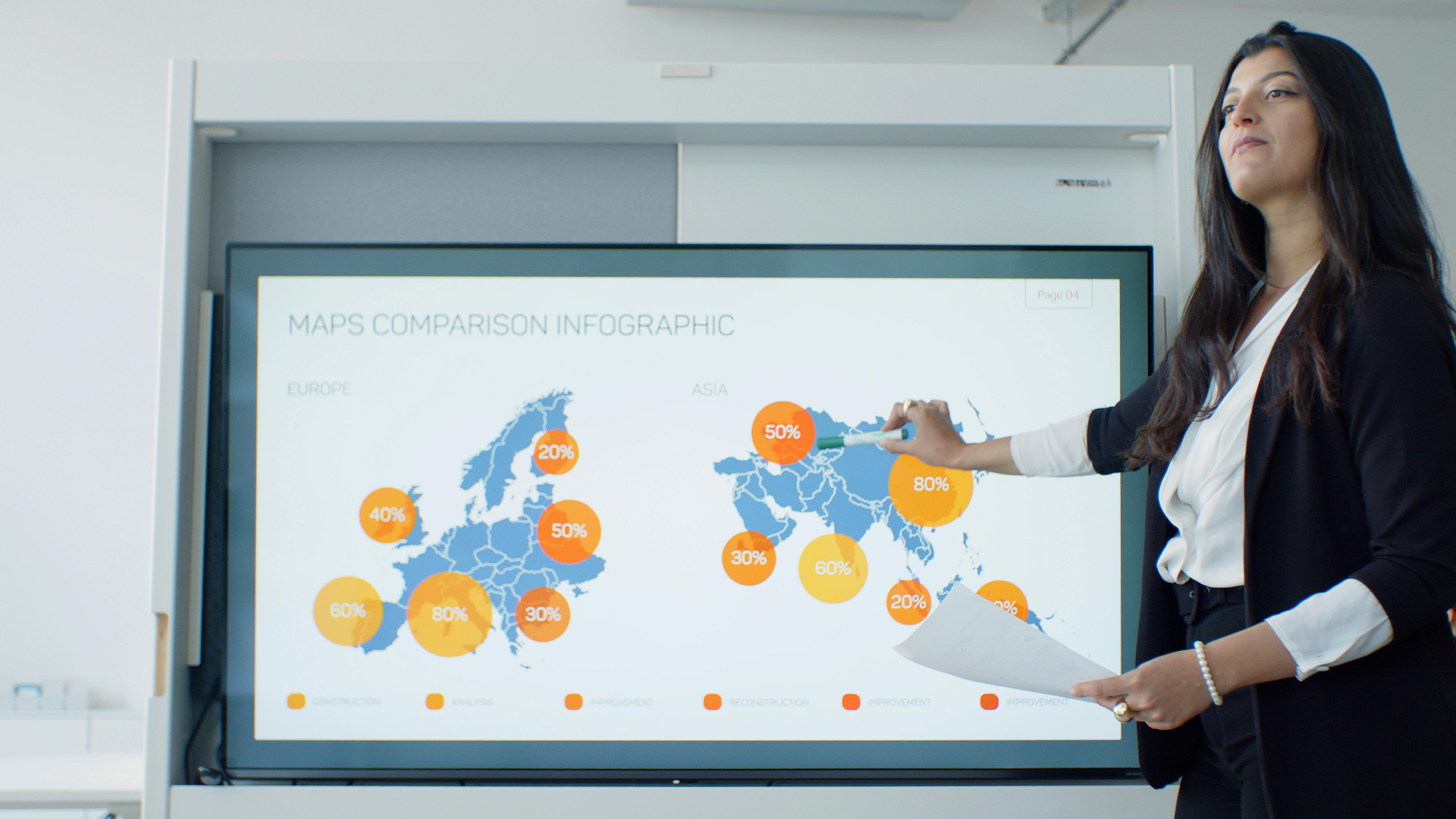With the death of third-party cookies and tightening privacy laws, publishers are being forced to reinvent the very foundations of their digital magazine strategies. First-party data—collected directly and ethically from your audience—has become not just an asset, but a lifeline. As a platform focused on responsive, engaging digital magazines, we have a front-row seat to this transformation, and in this guide, we want to share a comprehensive, publisher-first playbook to help you thrive in this cookieless world.

Why First-Party Data Is a Publisher’s Secret Weapon in 2025
Thanks to privacy regulations and browser changes, publishers can no longer depend on opaque ad networks or fragmented sources of audience data. Instead, your own digital magazine can become a powerful engine for first-party data—tracking genuine reader interest, powering ethical personalization, and unlocking direct monetization opportunities. But you can only do this if you structure your content, interactivity, and analytics correctly from the start.
Core Elements of a First-Party Data Stack in Digital Magazines
- Actionable Analytics: Understand scroll depth, clicks, and feature popularity to spot where your most engaged readers spend time.
- Lead Capture: Embed forms natively and contextually—without interruptive pop-ups—to build your subscriber list.
- Progressive Profiling: Collect and enrich your data over time, starting simple and layering in additional fields or surveys as trust builds.
- Accessibility & SEO: Ensure every asset is accessible, indexable, and structured for both users and search engines. This isn’t just ethical—it grows your addressable audience.
- Secure Data Governance: Give readers control over what they submit, with transparent privacy options and the choice of cloud or self-hosting for data sovereignty.

Step-by-Step: How to Turn Your Magazine Into a First-Party Data Engine
1. Instrument the Pages That Matter Most
Not every page is equal. Review your analytics to pinpoint which articles, features, or guides drive the most dwell time and engagement. Begin by focusing forms, quizzes, and CTAs here. For most publishers, this means the 10-20% of pages that drive the majority of high-intent behavior.
2. Make Native Lead Magnets the Heart of Engagement
- Instead of generic newsletter signups, offer downloadable assets tightly connected to the article (e.g., exclusive Q&A, expert checklists, bonus galleries).
- Keep forms short at first—just name and email—and let readers access the content immediately. This lift in conversion is real and measurable.
- Systems like Experios let you embed lead forms seamlessly in responsive layouts, ensuring data exchange feels part of the magazine—not a tacked-on banner.
3. Use Micro-Conversions to Nudge Deeper Engagement
- At key scroll points (e.g., 60-70% through a feature), offer a CTA for related downloads or digests.
- Convert quiz or poll completions into email signups—”Get your results by email.”
- Gently trigger a soft exit-offer with an additional asset just as a reader finishes a feature, maintaining relevance and minimizing disruption.
4. Build “Soft Walls” Instead of Hard Blocks
- Allow anonymous reading for 2-3 premium stories per issue to demonstrate value.
- Then introduce an account creation request—highlighting tangible benefits like saved reading lists, personalized recommendations, or exclusive event invitations.

5. Progressive Profiling: Smarter Data, Less Friction
- Start with minimal information on first capture.
- Follow up with email journeys and content—requesting additional preferences (topics, region, format) as readers interact with your magazine.
- This soft approach respects privacy while segmenting your audience more effectively than long initial forms.
6. Contextual Offers at Content Moments
- After a buyer’s guide: Offer “Email me this checklist and price alerts.”
- After a how-to: Offer a “Print-ready step list” via quick form submission.
7. Mobile-First Form Best Practices
- Use 2-3 field forms with clear, actionable privacy language and prominent submit buttons.
- Ensure all fields are large-tap and support keyboard autofill.
- Platforms like Experios come with accessibility validators to guarantee every reader, regardless of ability or device, can contribute their data.
8. Tag Interactivity for Intent Analytics
- Track interactions like gallery taps, video plays, and clickable hotspots to infer interest areas—insight you can use to tune future lead magnets and editorial calendars.
- Within Flipbooks, every media element can be tracked for impressions, dwell, and completion—feeding actionable insights into your content pipeline.
9. Ensure Discoverability with SEO-Driven Structure
- Build issues with semantic HTML—headings, bullets, and article schema—to surface both in traditional search and emerging answer engines.
- Leverage built-in SEO tools (titles, canonical tags, sitemaps) to maximize organic discovery of both your magazine homepage and individual feature spreads.

The Data That Matters Most: Structuring for Value
- Identity: Name, email, role, industry segment, and region. Essential for both segmentation and refining sponsored partnerships.
- Preferences: Reader-declared interests, preferred formats, frequency settings, and notification opt-ins.
- Behavioral: Stories read, sections viewed, time spent, and key actions taken (downloads, shares, quiz completions).
- Commercial: Clicking through buyer’s guides, affiliate links, or promotional offers (but always with reader consent and full transparency).
Blueprint: Your 30-Day Implementation Plan With Experios & Flipbooks
Week 1: Analysis and Setup
- Audit your last three issues for the top-performing articles and features.
- Identify the 10-20 critical pages for form, poll, and interactivity placement.
- Configure SEO metadata and ensure every new issue has clear HTML structure.
Week 2: Automation & Journeys
- Integrate analytics and CDP/CRM systems. Ensure all media and leads are tracked end-to-end.
- Design your welcome, engagement, and preference-segmentation email journeys.
Week 3: Lead Magnets & Micro-Conversions
- Produce 3-5 feature-connected bonus assets (e.g., downloads, bonus Q&As, or polls).
- Deploy in-flow or after-content CTAs and gently test soft walls for loyal readers.
Week 4: Test, Measure, Optimize
- Compare short vs long forms, copy tweaks, and placement for highest conversions.
- Refine and redeploy capture strategies to maximize lead quantity and quality.
Benchmarks You Should Aim For
- In-flow CTA lead rate: 5-10% per issue; move toward 10-15% when offers are tightly matched to feature content.
- Quiz/poll lead rate: Conversion climbs to 12-25% for instant, personalized result delivery.
- Account registration (soft wall): 20-30% with fair, transparent benefit messaging.
Critical UX, Privacy & Compliance Considerations
- Always inform the reader—adjacent to each form—what you do with their data, and provide clear links to your privacy policy.
- Preference centers for easy opt-out and granular control foster trust and reduce complaints.
- Accessibility is mandatory: at every stage, ensure that forms, CTAs, and navigation meet or exceed WCAG and ADA standards.
- If your organization prefers, Experios provides self-hosting options to guarantee data sovereignty.

Sample Layouts That Drive Action
- Executive Summary Download: At 65% scroll in a leadership feature, embed a short form to “Get 1-Page Summary.”
- Buyer’s Checklist: Place a side-panel offer in gear guides: “Email me this checklist and latest offers,” with an intent flag for future segmentation.
- Quiz Opt-In: “Which camera is right for you?”—results delivered by email, and include a topical newsletter invitation.
- Bookmarking (soft wall): Require a free account for readers who save 3+ articles, framing it as an exclusive benefit for frequent users.
Avoid These Common Pitfalls
- Don’t gate too much too soon—ensure value is proven before requesting info.
- Generic CTAs underperform—context and relevance are everything.
- Never ignore accessibility or privacy—readers (and the law) won’t forgive it.
- Don’t ask for too much upfront—use iterative, progressive profiling.
- Unstructured analytics waste your data—always tag, track, and segment meaningfully.
Actionable Checklist for Your Team
- Instrument high-impact pages with contextual, accessible forms and CTAs.
- Deploy progressive profiling journeys post-signup—never over-ask up front.
- Tag media and interaction for insight-driven segmentation and retargeting.
- Leverage Experios’ and Flipbooks’ SEO, accessibility, and analytics tools to keep iterating.
- Review analytics monthly to shift offers and improvements where they have the greatest impact.

Final Thoughts
Ultimately, great magazine publishing in 2025 means embracing engineered, delightful, and transparent data journeys—not just great content. By making your issues interactive, accessible, and optimized for first-party data, you’ll be equipped to build trust, grow readership, and secure direct revenue—no matter how privacy rules or browser features evolve in the years ahead.
If you’re ready to see how responsive, first-party-powered editions come to life, we’d love for you to explore what Experios and Flipbooks can do for your publishing strategy.







